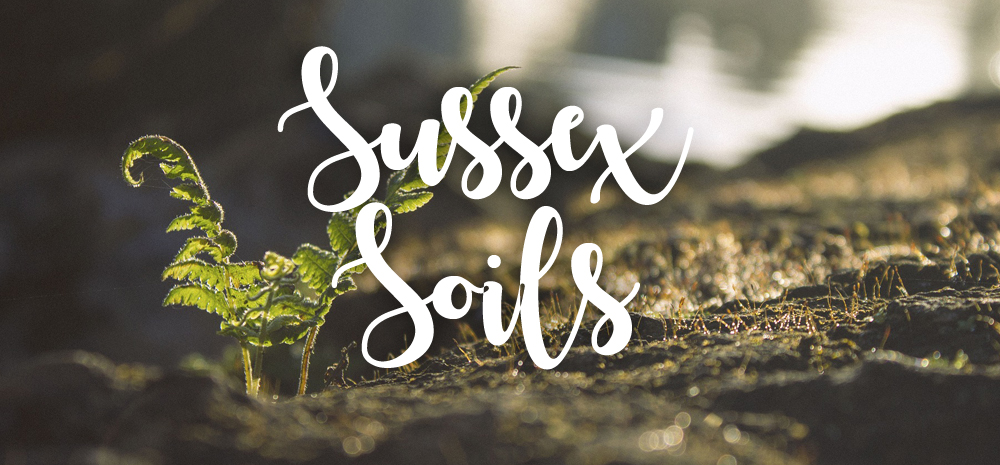Sussex Soil

Noting what type of soil you have is key when planting in your garden. Different plants will perform differently depending on where they are planted. Sussex soil varies across the county. But what type do you have in your garden?
We’ve compiled a guide to explain what type of soil you have in your area!
Starting with Scaynes Hill, the home of UpCountry! The land cover of this area is mainly arable and grassland. The texture of Scaynes Hill’s soil is loamy with some clay. Loamy means that it is a rich soil that crumbles easily. The soil contains an equal mixture of sand and silt. If planning to plant trees in this soil, we would suggest a laburnum or crab apple tree. Shrubs that would thrives are roses, mahonias and pyracantha. Planting perennials? Choose astrantia, bluebells, fox gloves, peonies and rudbeckia.
The drainage within the soil is slightly impeded, meaning that there is a delay in water draining. When it does drain, it mostly heads to a stream network. The fertility of this soil is moderate to high. This means that it will be a good habitat for your plants and should yield a high quality crop. This type of land is great for a wide range of pasture and woodland habitats. It has a low level of top soil carbon.
There are water protection issues in this area. This means that the farmed land is drained, therefore it is vulnerable to pollution run off and rapid through-flow to streams. Organic slurry, dirty water, fertiliser, pathogens and fine sediment can all move around through flowing water. The problem of surface capping can trigger erosion of fine sediment.
When cropping on this soil, it is reasonably flexible however more suited to autumn sown crops and grassland. The soil conditions may limit safe groundwork and grazing, particularly in spring.
Wivelsfield
Wivelsfield offers a very similar style of soil to Scaynes Hill. All of the above applies!
One difference is that the soil in Wivelsfield is mostly suitable for grass production for the purpose of dairying or beef alongside some cereal production, often used for feed. The timeliness of the stocking and fieldwork is important. Wet ground conditions should be avoided at the beginning and end of the growing season as this will damage the soil structure.
Lindfield’s soil is also loamy with clay. This rich soil crumbles easily and contains an equal mixture of sand and silt. We would suggest planting a laburnum or crab apple tree, shrubs such as roses, mahonias and pyracantha and perennials such as astrantia, bluebells, fox gloves, peonies and rudbeckia.
The drainage ofLindfield is naturally wet and the local groundwater feeds into a river. This grassland offers moderate fertility despite it being wet flood meadows. The topsoil carbon level is medium. The lands close proximity to to a river brings a high risk of pollution from floodwater scouring. This is increased after the spreading of fertiliser and slurry.
The land could be productive grassland as long as drainage is maintained. Cereal production could be successful where flood risk is low. There is a risk of poaching and soil damage early and late in the grazing season.
The South Downs

The South Downs also offer a loamy textured soil. This land is a lot more freely draining and mostly drains to chalk or limestone groundwater. This soil is very lime-rich, this means it is mostly made up of calcium carbonate and is very alkaline. Try planting clematis, crocus, campanula, box wood and dianthus. Be sure to not over fertilise otherwise you will end up will tall and floppy plants.
In terms of water protection issues, this type of soil is particularly vulnerable to leaching nitrate and pesticides into groundwater. The surface capping and erosion of chalk soils on these steeper slopes under cereals such as the Downs can cause problems. These could be eutrophication (defined as an excessive richness of nutrients in a body of water, frequently due to run-off from the land, which causes a dense growth of plant life) and the silting of chalk streams and gravel spawning beds.
On this type of land, spring and autumn cereals can be grown however the soil is especially vulnerable to nitrate leaching and they attract stricter fertiliser limits. We would suggest these crops are only suitable where there is hard limestone. The lack of soil moisture will limit the yields.
Want to see the soil in your garden? View the UK soil observatory’s map, here.


